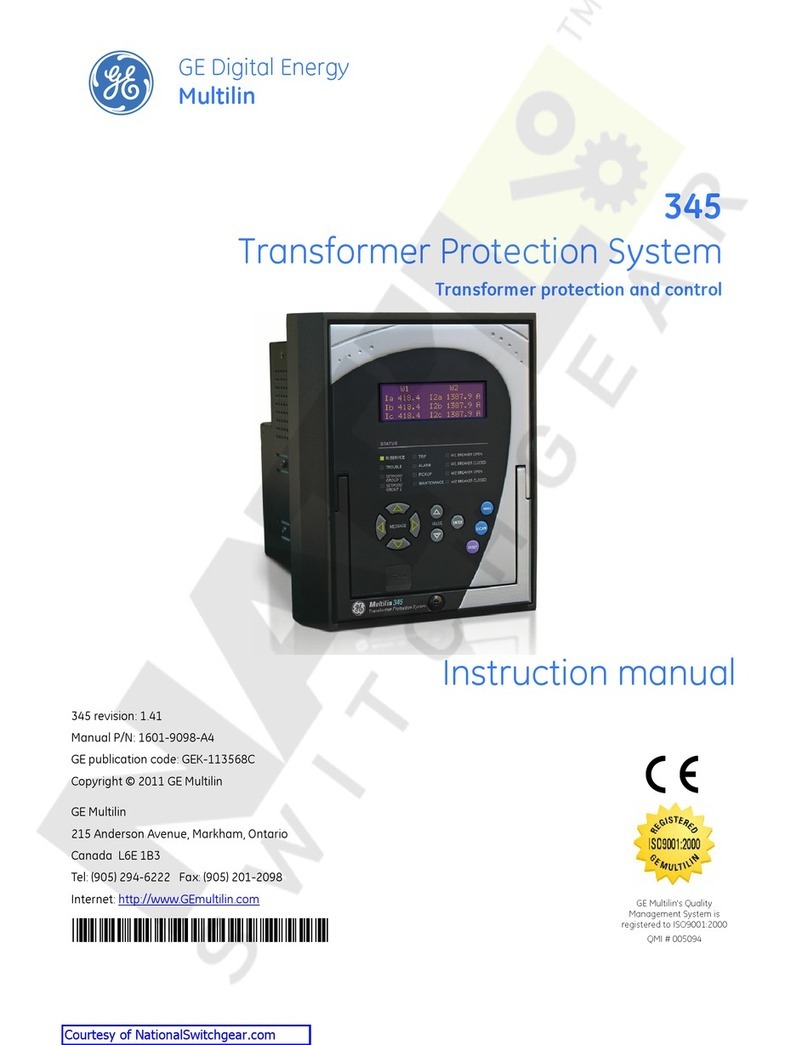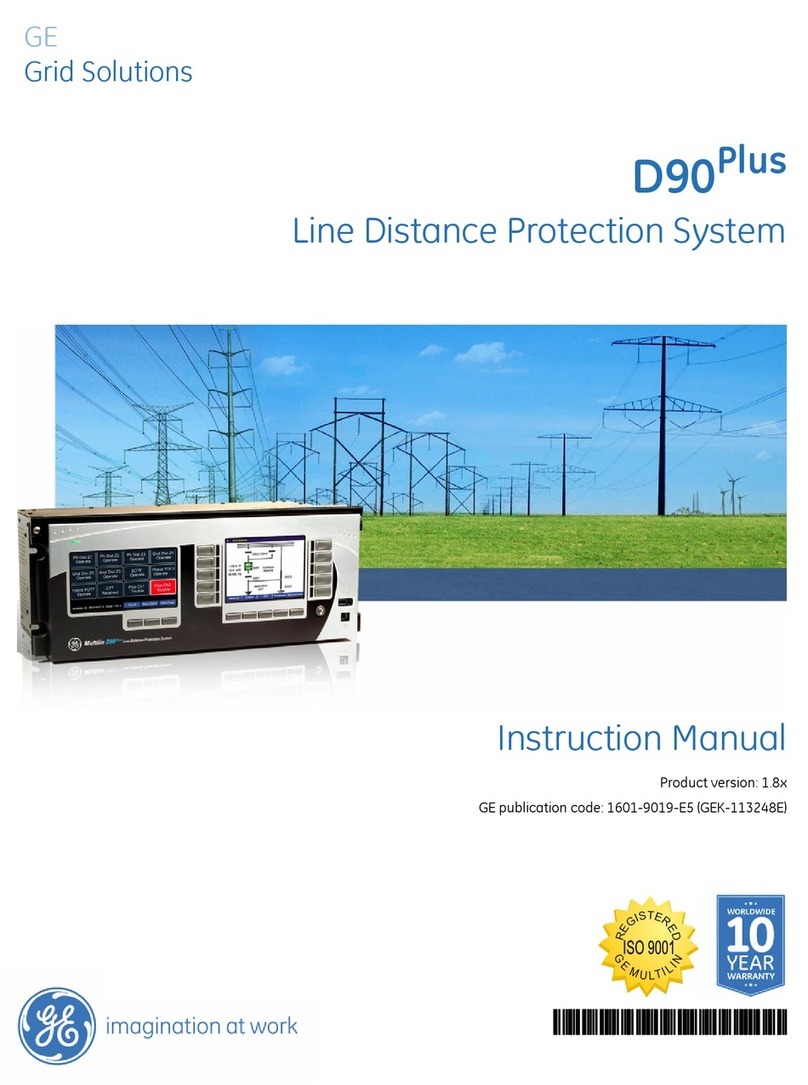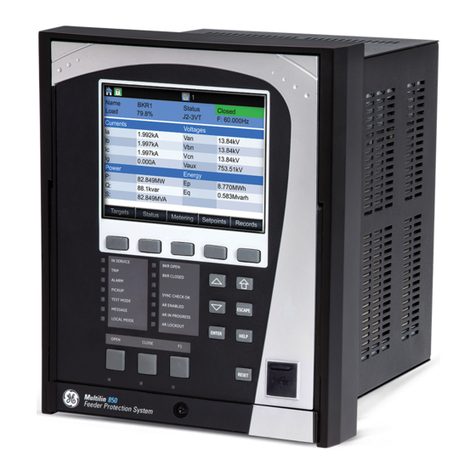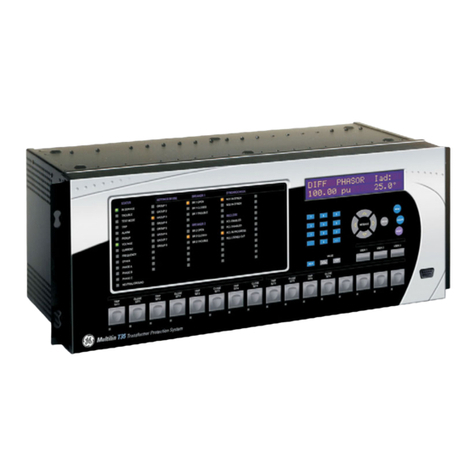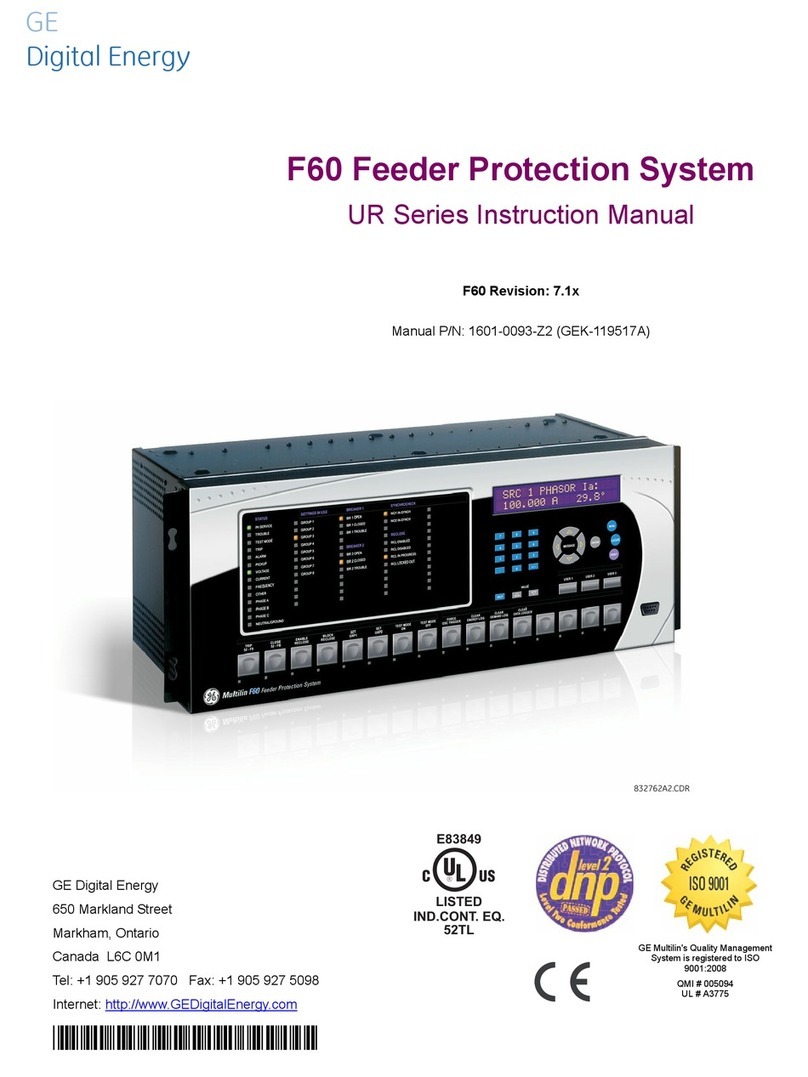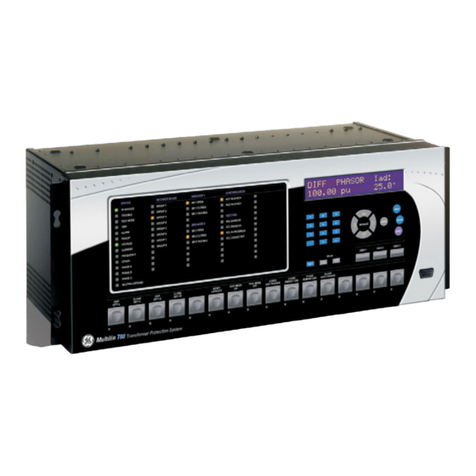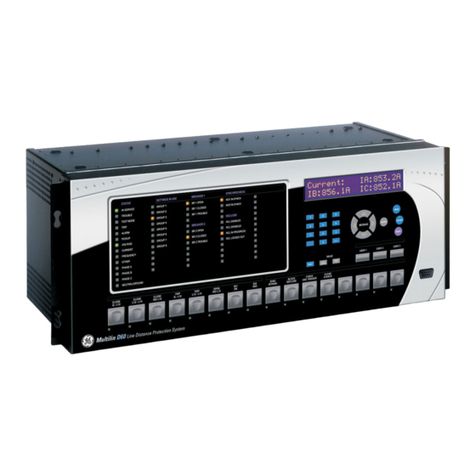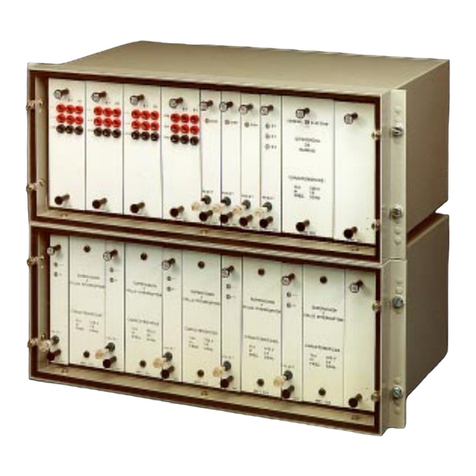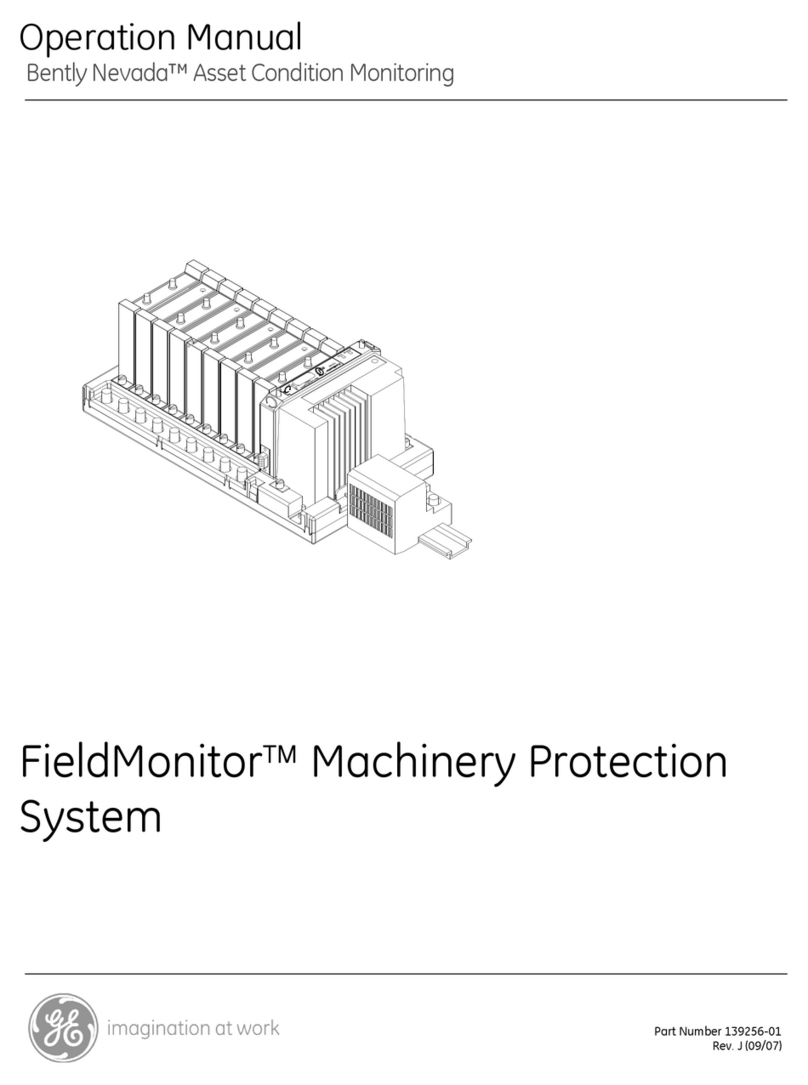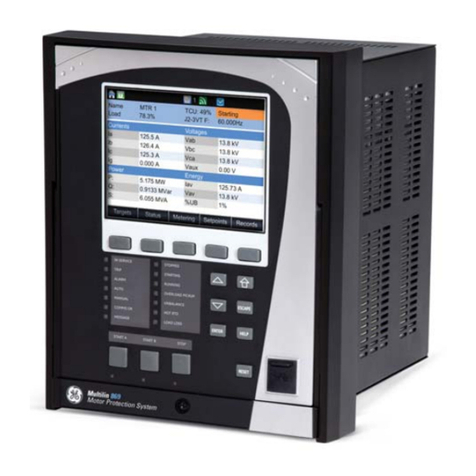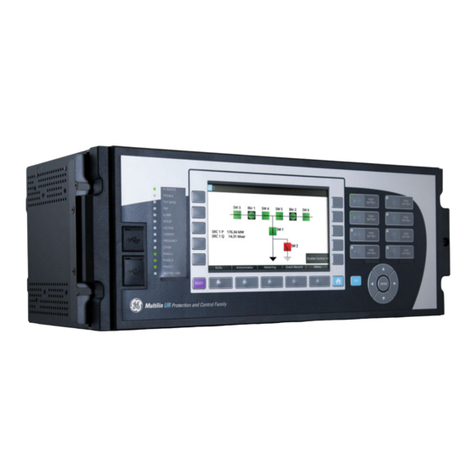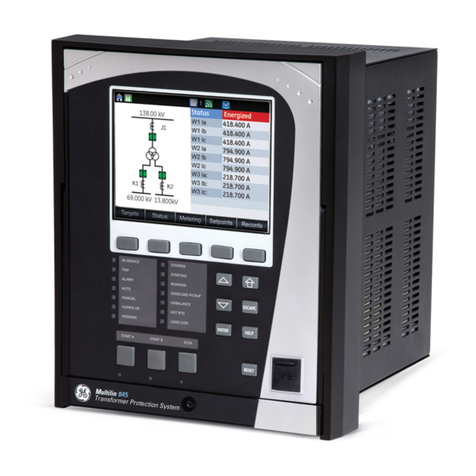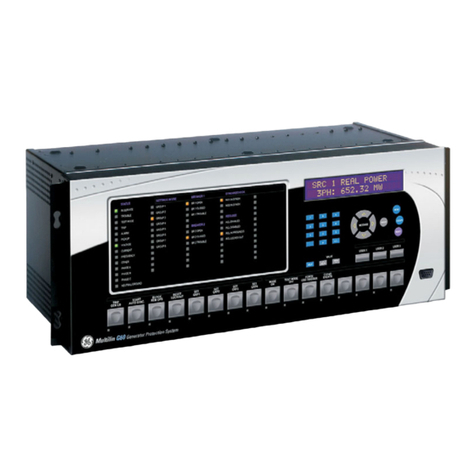
GEK-113032A W650 Wind Generator Protection System III
TABLE OF CONTENTS
5.5 CONTROL ELEMENTS
5.5.1 SETTING GROUP...........................................................................................5-74
5.5.2 UNDERFREQUENCY ELEMENT (81U)..........................................................5-75
5.5.3 OVERFREQUENCY ELEMENT (81O)............................................................5-75
5.5.4 AUTORECLOSE (79)......................................................................................5-76
5.5.5 BREAKER FAILURE ELEMENT (50BF)..........................................................5-83
5.5.6 VT FUSE FAILURE ELEMENT (VTFF)...........................................................5-86
5.6 INPUTS/OUTPUTS
5.6.1 INPUT/OUTPUT PLACEMENT .......................................................................5-88
5.6.2 CONTROL SETTINGS FOR INPUTS/OUTPUTS ........................................... 5-89
5.6.3 INPUTS............................................................................................................5-91
5.6.4 OUTPUTS........................................................................................................5-93
5.6.5 CIRCUIT SUPERVISION AND CONTACT SEAL-IN CIRCUITS.....................5-95
5.6.6 ANALOG BOARDS SPECIFIC SETTINGS...................................................5-105
5.6.7 VIRTUAL INPUTS .........................................................................................5-106
5.6.8 VIRTUAL OUTPUTS .....................................................................................5-106
5.7 TESTINGS
5.7.1 FORCE IO –INPUT TESTING.......................................................................5-107
5.7.2 FORCE IO –OUTPUT TESTING...................................................................5-107
5.8 RELAY CONFIGURATION
5.8.1 OUTPUTS......................................................................................................5-108
5.8.2 LEDS .............................................................................................................5-109
5.8.3 OPERATIONS...............................................................................................5-110
5.8.4 PROTECTION ELEMENTS...........................................................................5-114
5.8.5 OSCILLOGRAPHY........................................................................................5-115
5.8.6 CONTROL EVENTS......................................................................................5-116
5.8.7 SWITCHGEAR .............................................................................................5-118
5.8.8 HMI (HUMAN-MACHINE INTERFACE).........................................................5-119
5.9 LOGIC CONFIGURATION (PLC EDITOR)
5.9.1 INTRODUCTION...........................................................................................5-122
5.9.2 THEORY OF OPERATION............................................................................5-123
5.9.3 MAIN MENU..................................................................................................5-126
5.9.4 CONFIGURATION GENERATION................................................................5-127
5.9.5 GENERATION OF LIBRARIES ....................................................................5-128
5.9.6 EXAMPLE OF APPLICATION.......................................................................5-130
6. ACTUAL VALUES 6.1 FRONT PANEL
6.1.1 LEDS .................................................................................................................6-1
6.2 STATUS
6.2.1 OPERATION BITS.............................................................................................6-2
6.2.2 BREAKER..........................................................................................................6-2
6.2.3 PROTECTION...................................................................................................6-2
6.2.4 CONTROL ELEMENTS.....................................................................................6-8
6.2.5 PROTECTION SUMMARY..............................................................................6-13
6.2.6 SNAPSHOT EVENTS SUMMARY..................................................................6-15
6.2.7 MODBUS USER MAP.....................................................................................6-17
6.2.8 SWITCHGEAR STATUS.................................................................................6-17
6.2.9 CALIBRATION.................................................................................................6-19
6.2.10 FLEX CURVES................................................................................................6-20
6.2.11 SYSTEM INFO ................................................................................................6-20
6.2.12 RECORD STATUS..........................................................................................6-20
6.3 METERING
6.3.1 PRIMARY VALUES.........................................................................................6-25
6.3.2 SECONDARY VALUES...................................................................................6-28
6.3.3 PHASOR DIAGRAM........................................................................................6-30
6.3.4 FREQUENCY..................................................................................................6-30
6.3.5 INPUTS / OUTPUTS .......................................................................................6-31
6.4 RECORDS
6.4.1 EVENT RECORDER.......................................................................................6-37
6.4.2 WAVEFORM CAPTURE .................................................................................6-39
6.4.3 FAULT REPORT .............................................................................................6-40








